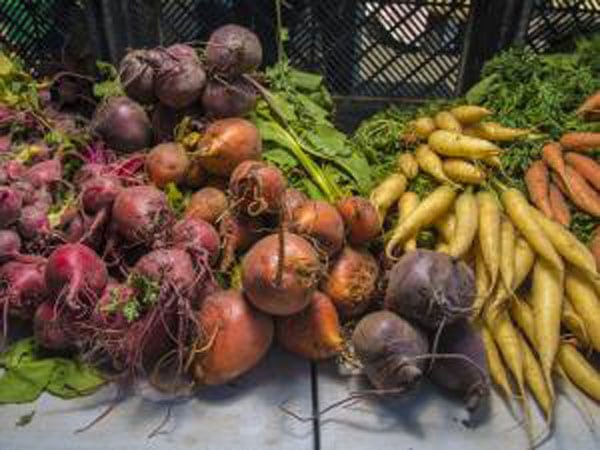
June 17, 2018; Crain’s Detroit
Sherri Welch, writing in Crain’s Detroit, highlights two food-box subscription companies that sell produce and other food that retailers won’t touch in the Detroit market. One is the Baltimore-based Hungry Harvest; the other is Toronto-based Flash Food. “Both,” notes Walsh, “are buying local produce that’s misshapen or otherwise unmarketable and other surplus food that would go to waste.” The produce is then packaged in boxes and resold to customers who can obtain healthy food at a discount while helping reduce food waste with their purchase.
These businesses are for-profit, leading to some concern that the businesses might cut into the surplus food donations upon which nonprofit food banks rely. It should surprise no one, however, that this has not happened. As Phillip Knight, executive director of the Food Bank Council of Michigan, tells Walsh, “At this point, I think we are all working together to feed hungry neighbors, reduce waste and lessen the impact on the environment.”
As NPQ has noted, food waste is a big deal, and we are far, far away from the point where we might have to worry about a lack of surplus food to go around. Indeed, last year, the National Resources Defense Council found that the average American throws out 400 pounds of food a year. In other words, up to 40 percent of food grown on the farm bypasses the fork and ends up in a landfill.
Globally, the impact of food waste can be seen in terms of lost resources, wasted water, increased levels of climate-change-producing gases, and diverted food that could contribute to alleviating hunger. In terms of water alone, agriculture constitutes over 70 percent of the freshwater consumption on the planet, and the sheer amount of water misused through food waste is hard to fathom. According to the Food and Agriculture Organization of the United Nations (FAO), it is estimated that annually over 60 trillion gallons of water are used to grow food that is ultimately wasted.
The scale of discarded food is equally as concerning. According to the FAO, roughly one-third of the food produced for human consumption every year—approximately 1.3 billion tons—gets lost or wasted, representing nearly $1 trillion. The cost of producing, harvesting, transporting, and disposing of this food isn’t just financial; food waste accounts for about eight percent of global climate pollution, more than the nations of India or Russia.
In the United States, food waste represents inefficiencies in systems and reflects the desire for picture perfect produce. According to one report, food waste throughout the US accounts for more than 60 million tons of waste, which translates into $160 billion of produce and, according to the Environmental Protection Agency, represents over 21 percent of all waste in landfills. In fact, more food reaches landfills and incinerators than any other single material in the everyday trash stream. What’s more troubling is that these statistics represent the downstream impacts of food waste—food that is actually bought and consumed. When taking into account food that never reaches markets or is discarded due to perceived deficits based on appearance, the total is much higher; some estimate nearly half of all food grown in the US is wasted. So, many approaches are needed.
Sign up for our free newsletters
Subscribe to NPQ's newsletters to have our top stories delivered directly to your inbox.
By signing up, you agree to our privacy policy and terms of use, and to receive messages from NPQ and our partners.
One approach is that offered by businesses like Hungry Harvest and Flash Food, along with similar efforts such as Denver’s nonprofit We Don’t Waste, all of which procure and market “ugly” or “imperfect” produce. Some of the nonprofit programs in this area work in direct partnership with hunger relief organizations and give their customers the option to buy a box of ugly produce and donate it to a family in need.
In addition to redistributing imperfect food, other solutions include processing food waste as bioenergy. One innovative model is integrating food banks with low-income housing complexes and using the food waste produced by both to produce energy. In the Pacific Northwest, Impact Bioenergy develops and manufactures bioenergy products that allow communities and commercial food waste generators to lessen their environmental footprint and conserve local soil resources while also reducing their waste disposal and energy costs. Bioenergy offers a solution to food waste while addressing energy insecurity at the same time.
A number of groups also urge policy approaches to shift the amount of food entering the waste stream. A May 2017 paper published by Harvard Law School’s Food Law and Policy Clinic looks at the 2018 Farm Bill as a portal for changing the national conversation on food waste by integrating strategies and initiatives to support diversion efforts. The strategies range from research and investment in new technologies to a national awareness campaign on food waste to grants and loans for the development of composting and anaerobic digestion infrastructure.
Policy is a major focus on ReFed, one of the nation’s leading nonprofits dedicated to addressing food waste. ReFed is a multi-stakeholder nonprofit powered by an influential network of the nation’s leading business, nonprofit, foundation, and government leaders committed to scaling solutions to reducing US food waste. One of their initiatives in partnership with the Food Law and Policy Clinic is the US Food Waste Policy Finder, a tool that provides research on current food waste policy at the federal and state levels, best practices, and policy improvement recommendations that support more food waste prevention, recovery, and recycling.
Yet another promising approach is to incorporate the reuse of food that has been rejected by the conventional market into social enterprises. One example is DC Central Kitchen, a job-training catering social enterprise that buys food seconds from farmers and uses that produce in the meals it serves to students in schools and catering event guests, even as the nonprofit also addresses the cycle of hunger. The core of their model focuses on three main goals: create opportunities for meaningful careers, expand health food access, and test innovation solutions to systemic problems. According to ReFed’s “Roadmap to Reduce US Food Waste by 20 Percent,” an estimated 15,000 permanent jobs could be created through policy initiatives alone.
The issue of food waste is beginning to be recognized both domestically and abroad. Some of the solutions described in this newswire and highlighted in articles and documentaries like Wasted! The Story of Food Waste, produced by the late Anthony Bourdain, offer a glimpse of ways that nonprofits can expand their missions and collaborate with others to reduce food waste while improving the health and well-being of those in need.—Derrick Rhayn











